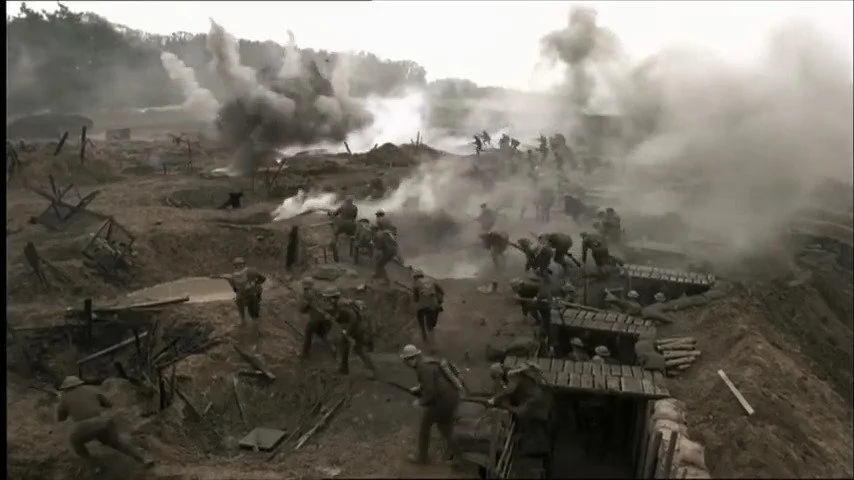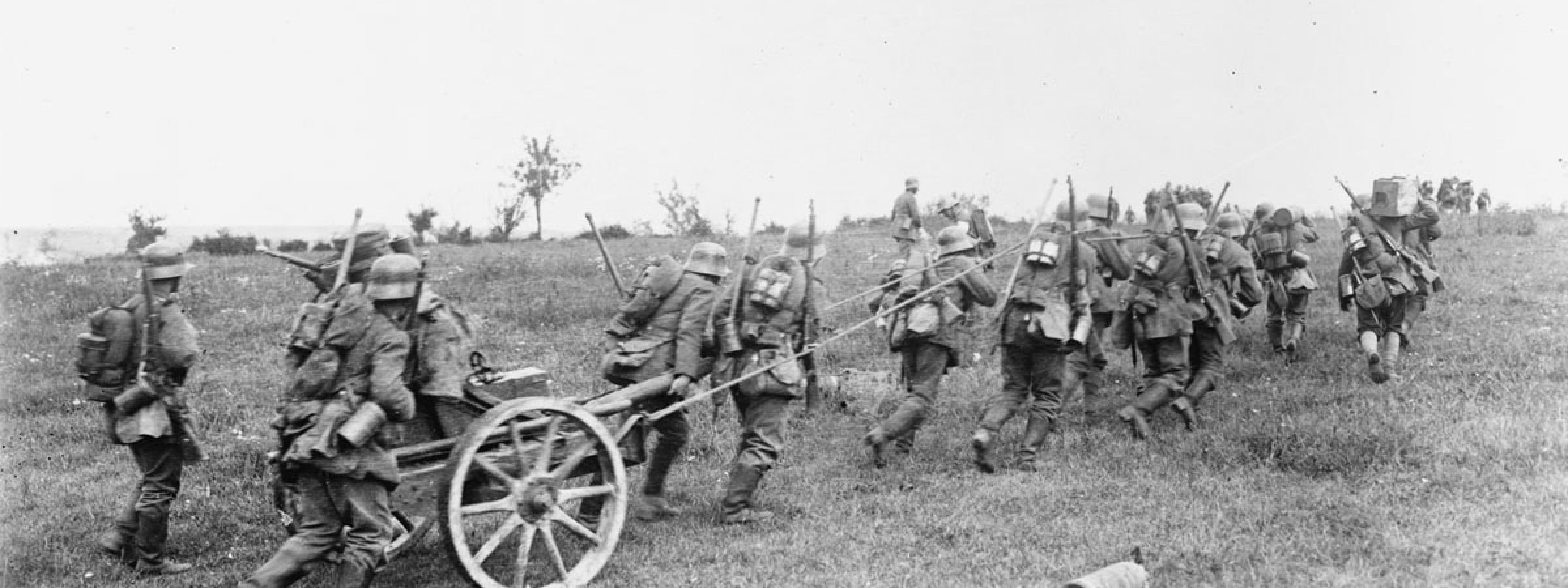The U.S. Army’s Military Decision Making Process provides a step-by-step model for decision-making and order production. However, it provides insufficient direction for how to adapt when confronted with complexity. Commanders and staffs often scramble to re-plan when faced with adversity, consuming the entire organization in an attempt to get back on the plan or develop a new one.
Drawing Simplicity From Chaos
Clausewitz says, “The art of war...cannot attain the absolute, or certainty...With uncertainty in one scale, courage and self-confidence must be thrown into the other to correct the balance.” So, we use theories that have been tested by time—from those that explain the holistic picture of war to those that focus on the duel between two people—and provide invaluable guidance to science such that it can manage uncertainty.
#Reviewing Never in Finer Company
The 308th was a draftee regiment, largely from New York City, the Meuse-Argonne Offensive. On October 2, 1918, due to a lack of experience on the part of both the regimental and divisional commanders, the 308th found itself surrounded by the Germans. The soldiers’ ability to hold out for six days behind enemy lines earned them the name “Lost Battalion” and was seen by many as an example of the American spirit.
In Military-Civil Fusion, China is Learning Lessons from the United States and Starting to Innovate
China’s national strategy of military-civil fusion is provoking some anxiety in Washington. There are concerns the United States could be challenged, or even outright disadvantaged, in technological competition relative to the more integrated approach to innovation Chinese leaders are attempting to achieve. It is important to recognize both the parallels and distinctions between American and Chinese concepts and approaches that can clarify the character of this competitive challenge.
The Time for Honor: A National Security Strategy for 2020
A growing distrust gradually replaced that love. More people view U.S. power as a major threat, and allies are increasingly uncertain the U.S. will keep its commitments. This is a trend going back three decades. As a result, regardless of who is President in January 2021, the central theme for the next National Security Strategy should focus on regaining U.S. honor.
Theory of Battlespace Technology—Technology and Warfare
The degree of which humans can control the physical space will always be constrained by physics. However, the creative thinking that derives energy from the chaos of war to turn chance into opportunity is not bounded. The success of maneuver warfare is less dependent on the tools available, and more dependent on the creation of new ways to generate and exploit of tactical effects given all the tools available. Unsurprisingly, the major pivotal successes of the application battlespace technology have been the results of ingenious warfighting techniques that maximize the benefits of technological tools.
From Platforms to Control: #Reviewing Thomas Rid’s Rise of the Machines for Its Macro-History of the U.S. Air Force
For those familiar with the traditional narrative of U.S. airpower history centered on the Air Corps Tactical School’s development of bomber doctrine followed by its application against Germany during World War II, Rid provides a jarring but useful counter-narrative focused on human-machine interactions.
Reflections On Being a Colonel
I was passed over the first time considered for promotion. I was one of two armor officers selected above the zone for colonel on the 2000 U.S. Army promotion list, and, in reflecting on that time, I thought I should write about the advice I received prior to pinning on the rank and share some lessons I learned along the way.
Military Aid: Financing Foreign Conflict?
While the aim of Foreign Military Financing may be to strengthen U.S. geopolitical alliances, it has also caused grated nerves and violent conflict. The alternative—Russian and Chinese arms transfers—is likely worse for the U.S. Ultimately, there is no ideal option, but leveraging aid to improve human rights or protect U.S. objectives is the least the U.S. can do for a world where weapons can fuel resentment and strife.
Theory of Battlespace Technology – Introduction
This is the beginning of a theory on the use of technological tools in the battlespace. This theory seeks to guide technologists in the thinking of technology design for the battlespace, and to guide soldiers and commanders in selecting the right technological tool for the tactical action to achieve the desired strategic effects. More importantly, this theory serves as a common language for the tactical and technical experts to communicate about needs in the battlespace and technology advancement as it pertains to warfighting.
#Reviewing Bayly's War
The popular conception of World War I centers on hellish trench warfare and all its horrors. While it is undeniable that the war was won and lost on the Western Front, the lines stretching back across the Atlantic that brought men and desperately needed supplies into the theater of operations played an essential part in Allied victory.
21st Century Herodotus: Developing Future Artificial Intelligence Leaders Today
Greek mythologies, while not perfect analogies, provide ample cautions for military leadership faced with the prospect of future algorithmic warfare. Advanced military technologies named after Greek mythological characters—Harpy, Gorgon, Athena, Aegis, Talos, etc.—suggest an analogical construct reminiscent of ancient heroes who relied on the favor of the gods to tip the enigmatic scales in their favor.
The Great Game Reinvigorated: Geopolitics, Afghanistan, and the importance of Pakistan
The return of great power geopolitics has transformed Afghanistan’s strategic circumstances, affecting both its future and the long-term interests of the United States. These conditions reinforce the enduring importance of Pakistan to America’s strategic flexibility, particularly in an era of renewed great power competition.
On the Distributed Control Framework of a Technical Union
On Establishing a Technical Union
Art is what allows America to create extraordinary futures out of chaos. And art, once again, will allow America to achieve policy and military success out of science. America embraces and disciplines chaos to create strength and power. For “liberty is power,” John Quincy Adams said. “The nation blessed with the largest portion of liberty must in proportion to its numbers be the most powerful nation upon earth.” An artist who begins with a vision and nurtures and disciplines the power of chaos with a lightness of being and a firmness of mind, will be rewarded with the surprise of creating something that exceeds his or her original vision at the end.
The Three Types of Organizational Learning
Organizational learning is an important component of military success. The German military adapted its small unit tactics to trench warfare, but its failure to thoroughly ask if attacking was the best way to destroy the Entente’s armies or if that should be their goal at all combined with other factors to lead them to failure. Militaries that follow the German example and focus on method optimization while neglecting method selection and goal selection will be able to adapt and succeed at the tactical level, but will often be unable to translate that into broader successes.
The Decisive Impact of French Military Intelligence on the German Marneschutz-Reims Offensive
July 15th 1918 saw the start of the fifth and final German offensive of the First World War. On that day, the Germans launched the opening phase of the Second Battle of the Marne, Codenamed Operation Marneschutz-Reims, shifting the entire momentum of the war from the Central Powers to the Entente. One of the key factors contributing to this shift was tactical combat intelligence.
Military Innovation Strategy: Winning a Total War by Relinquishing Total Control
The People Who Invented the Internet: #Reviewing The Imagineers of War
Weinberger’s history of DARPA is an enthralling read and especially recommended for professionals in acquisition or research areas. It should appeal far beyond the defense community, it is perhaps the best institutional case study in innovation management and adaptive organizational design available.
#Reviewing In the Year of the Tiger
In the Year of the Tiger still deserves serious consideration by scholars as a worthwhile book in the growing field of academic investigation into the First Indochina War. Despite shortfalls in commission and omission at points, Waddell provides a cogent and useful analysis on which others may usefully build. That should, after all, be the goal among those who seek to understand how the First Indochina War conditioned the disaster the United States chose to pursue after final French defeat in 1954.





















